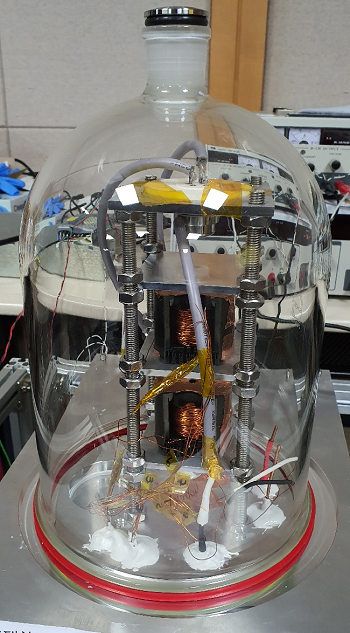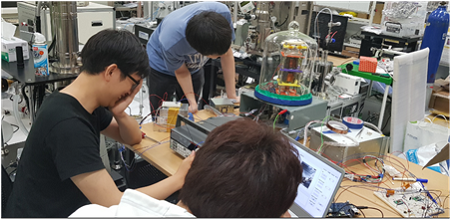
In this interview, AZoM speaks to Junhee Lee, CEO of COXEM, about how AI will change electron microscopes, and how Coxem has been working to promote microscopy with young people.
Can you let our readers know a little bit about Coxem.
Coxem is a company that develops and manufactures electron microscopes, and was established in 2007. Coxem's first Table Top SEM, the EM-30, was introduced to the market in 2011, making Coxem a market leader in the field of Table Top SEM (TT-SEM). Our dedication to promoting electron microscopes has made a great impact in academia as well as various fields of industry. The electron microscope is a combination of science and engineering and is key to understanding the nano world. Our ultimate goal is not only to build electron microscopes, but also to provide a range of different instruments and equipment which meet the demands of industries such as material science and engineering, chemistry, metals, semiconductors, medicine, and bio-science.
While many electron microscopy companies only think of how to create clear images with the microscope, Coxem is in search of an answer on how to effectively utilize the electron microscope. In response to this question, we are constantly challenging ourselves to create an electron microscope that is affordable and easy to use. The EM-30 series is the first answer to this question.
What keeps you focused on TT-SEM?
Ever since the modern electron microscope was developed in 1932 by Dr. Ernst August Friedrich Ruska of Germany and refined by Siemens, Hitachi, Philips, and JEOL with high-end technologies, electron microscopes have always been expensive. Although these remarkable developments have contributed to exponential growth in fields of expertise such as medical science, chemistry, and physics, there were still limitations for new users to become proficient with the instrument. Despite the need for electron microscopes in various industries, the perception of them being complex and expensive was still a major obstacle. In order to make electron microscopes more available to the industries that can benefit from them, Coxem has developed simplified TT-SEMs at a reasonable price. We are looking forward to seeing our TT-SEMs used and accepted in companies, universities, and research institutions, and being used in new and novel applications.
How do you describe the tabletop SEM and the roadmap for the future?
The SEMs in Coxem's product portfolio include both Table Top SEMs and Full-Size SEMs. Our TT-SEMs include the EM-30 series, EM-30Plus through the EM-30N. These instruments are configured to meet the needs of our different customers, from new users through experienced users.
The EM-30 was the first TT-SEM to achieve a magnification of 150,000x and demonstrated that high-end performance was possible for TT-SEM. The introduction of the EM-30AX included an integrated EDS detector to reflect the strong demand for elemental analysis. These innovative steps allowed Coxem to become a cutting-edge leader in the TT-SEM market, reaching sales of 600 units in 2019.
The 5th generation models EM-30N (Table Top SEM) and CX-200PLUS (Full-size SEM) are the world's first SEMs to apply a digital processing system which helps to obtain optimal images in just a second and also control the stage to observe large areas and make particle analysis possible in various areas such as GSR analysis, minerals analysis, impurity testing, and steel composition analysis. Traditional SEMs have acquired images using analog processing methods, in which inexperienced users face difficulties manipulating the instruments. However, EM-30N, with its fast image processing speed and several automation features (Auto Brightness, Contrast, etc.), make it easier to obtain the best clear image with simple manipulation. The EM-30N also offers STEM as an option, and this led to expanding the application of TT-SEM to the life sciences.
Coxem is constantly challenging the limits of TT-SEM to build a product line that embraces the high-end market to the low-end market. In order to make it easier and more accessible to many users, we are currently working on Air-SEM and FE-SEM in the form of TT-SEM. To start off with our plan, our model EM-30LE with the CeB6 Electron Source will be released in the second half of 2020.
Tell me about how Coxem has been able to publicize the electron microscope.
The EM-30 has gained a lot of attention from many different industry players who have been hesitant to apply TT-SEM in their businesses. With a maximum magnification of 150,000x and simplified operation, our customers have been able to apply TT-SEMs in their businesses to get better quality products. As a result, TT-SEMs have become a major factor in the SEM market. Moreover, Coxem has put a lot of effort into working with university students on “Electronic Microscope Making Project” or "DIY SEM" as we call it. In the first year, we started off with a three-member team. In the following year, five teams participated in the Microscope Making Contest and were able to get the real images from their microscopes. It has now become a regular event where many college teams challenge themselves to make quality microscopes. The images created after months of hard work of young people is just beginning to widely spread what electron microscopes are and open up new applications.


DIY SEM made by university students with the training provided by Coxem
And Coxem’s effort didn’t end there. We ran a truck called “The visiting nano-truck” for five years. We rendered services by visiting students and people who are curious to learn new things as well as for those who are not familiar with analytical equipment/ instruments to give them opportunities to familiarize themselves with electron microscopy. By running common samples such as insects, flowers, and coins we were able to show the hidden world in everyday objects. These attempts have helped to publicize SEMs in general, and also have given a great lesson and chances for us to grow by dealing with issues arising from a variety of work environments and conditions such as vibration and shock from the new environments, malfunctioning at low temperatures during winter, and errors caused by wind and dust.
Now Coxem is running Coxem Academy every month since 2017; it's a free curriculum for anyone interested in SEM. We offer opportunities to learn the basic structure and principles of SEM and to provide hands-on practice on how to operate them.
What do you think will happen when AI is applied to electron microscopes?
Advanced AI technologies, such as deep-learning-base score prediction (which will be a replacement of the autofocus algorithm used in many other products now), will be a key to eliminate difficulties in focus control that every user faces. The current Auto Focus used in the industry has some limitations achieving optimum images under various conditions and environments, but with the AI applied to SEM, it allows the best focus of the images regardless of kinds of specimens and samples as well as providing the best brightness and contrast for analysis. We also believe that a fully automatic control system in SEM, (analogous to self-driving cars in the automotive industry), will become possible in the near future.

Where do you see Coxem in the future?
Providing the right solutions for all of our customers is Coxem’s motivation to keep moving forward. For this reason we develop not just electron microscopes but also a variety of high-end analytical devices to be able to provide our customers with specific solutions for their needs. We are striving hard to develop and offer our customers advanced electron microscopes such as FE-SEM and FIB and to become a global leader in the near future. And now, SEM with EDS and EBSD is providing solutions to a wide range of industries through large area analysis. And for the bright future of our next generation, many creative ideas and thoughts are being shared on how we can contribute our SEMs to be part of educational programs in schools to let the young generation apply it to their studies. Asking ourselves “How can we solve the problems that different people in different fields have, and how much can it benefit the world?” will always serve as a guide to go on the right path and to see things from a variety of perspectives to reach our goals.
About Junhee Lee
 Junhee Lee is the CEO of COXEM Co. Ltd., a scanning electron microscopy and technology enterprise in Korea. He holds a PhD in Electronics and Electrical engineering, and specialized in semiconductor design and network systems at KAIST, a top national research university in Korea. He has been teaching at several universities since 2012 and dedicating himself to doing research and development of scientific instruments and promoting electron microscopy to a variety of different industries.
Junhee Lee is the CEO of COXEM Co. Ltd., a scanning electron microscopy and technology enterprise in Korea. He holds a PhD in Electronics and Electrical engineering, and specialized in semiconductor design and network systems at KAIST, a top national research university in Korea. He has been teaching at several universities since 2012 and dedicating himself to doing research and development of scientific instruments and promoting electron microscopy to a variety of different industries.
Disclaimer: The views expressed here are those of the interviewee and do not necessarily represent the views of AZoM.com Limited (T/A) AZoNetwork, the owner and operator of this website. This disclaimer forms part of the Terms and Conditions of use of this website.